Updates
Relief and recovery for animals and people in Myanmar
Read moreThe fastest whales and dolphins in the ocean
Whales, dolphins, and porpoises—known together as cetaceans—have streamlined bodies that help them travel quickly through the ocean, which is an important ability for escaping predators and migrating long distances (for the North Atlantic right whale, this can mean more than 1,600 kilometres, or 1,000 miles every year).
Many of these animals are sadly threatened by human activities like entanglement, bycatch, vessel strikes, and ocean noise pollution. As a rescue and conservation organization, IFAW is dedicated to combatting these threats and helping whales and dolphins thrive. Learn more about our work.
Out of all marine mammals, which can swim the fastest? Learn about the fastest dolphin, the quickest whale, and which species takes the grand prize out of these speedy swimmers.
In addition to being the largest animals on Earth, blue whales can swim quite fast. Though they typically cruise at speeds around 8 kilometres per hour (5 miles per hour), they can accelerate to more than 32 kilometres per hour (20 miles per hour). Blue whales are also among the loudest animals on the planet—the sounds they make can be heard by other blue whales up to 1,600 kilometres (1,000 miles) away. This helps them communicate with each other over great distances across the deep, dark ocean. However, these communications are often interrupted and made more difficult by human-caused ocean noise pollution. Blue whales can be found all over the world, in all oceans except the Arctic.
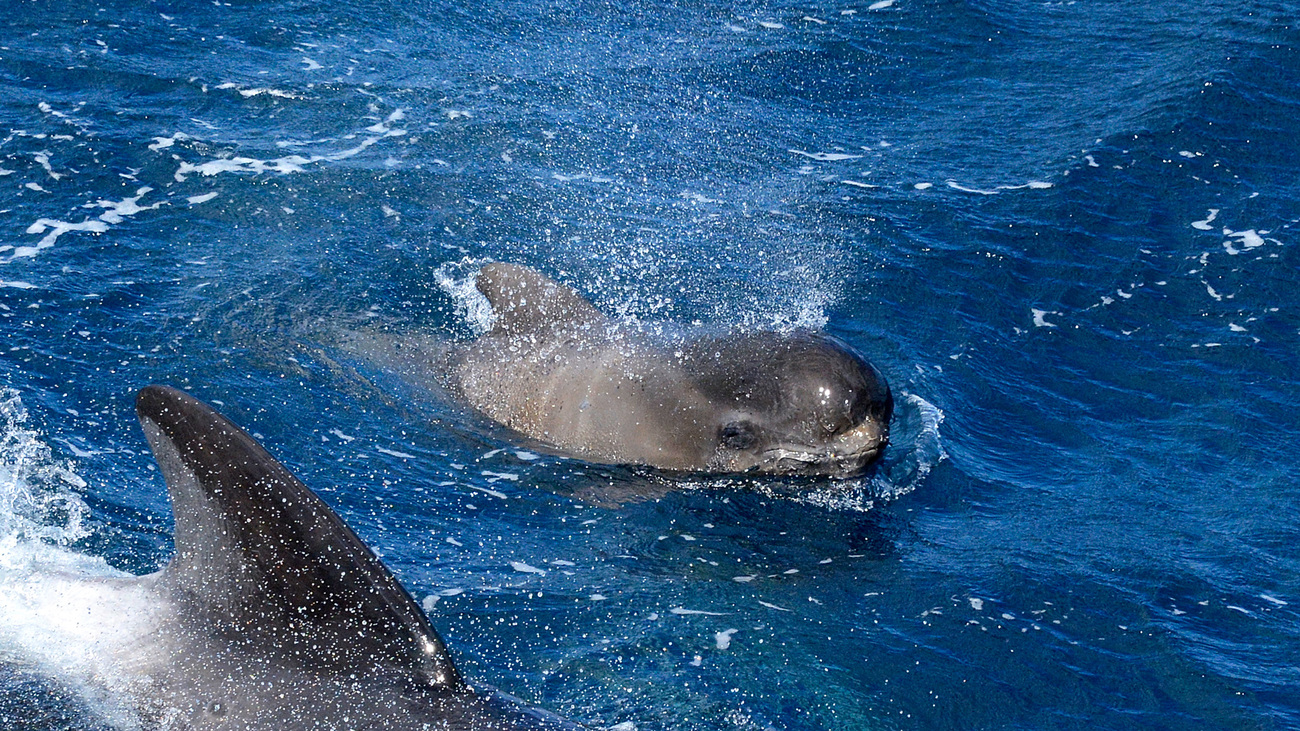
The short-finned pilot whale is known as the ‘cheetah of the deep sea’ for good reason—it dives to extreme depths at rapid speeds to chase after squid. These dives can reach speeds of 32 kilometres per hour (20 miles per hour), during which the whale holds its breath. Their behaviour contrasts with that of beaked whales, which dive more slowly and deeper, conserving their energy while hunting squid and other deep-sea fish. Short-finned pilot whales can be found in temperate and tropical waters across the globe. Like killer whales, short-finned pilot whales are actually considered dolphins.
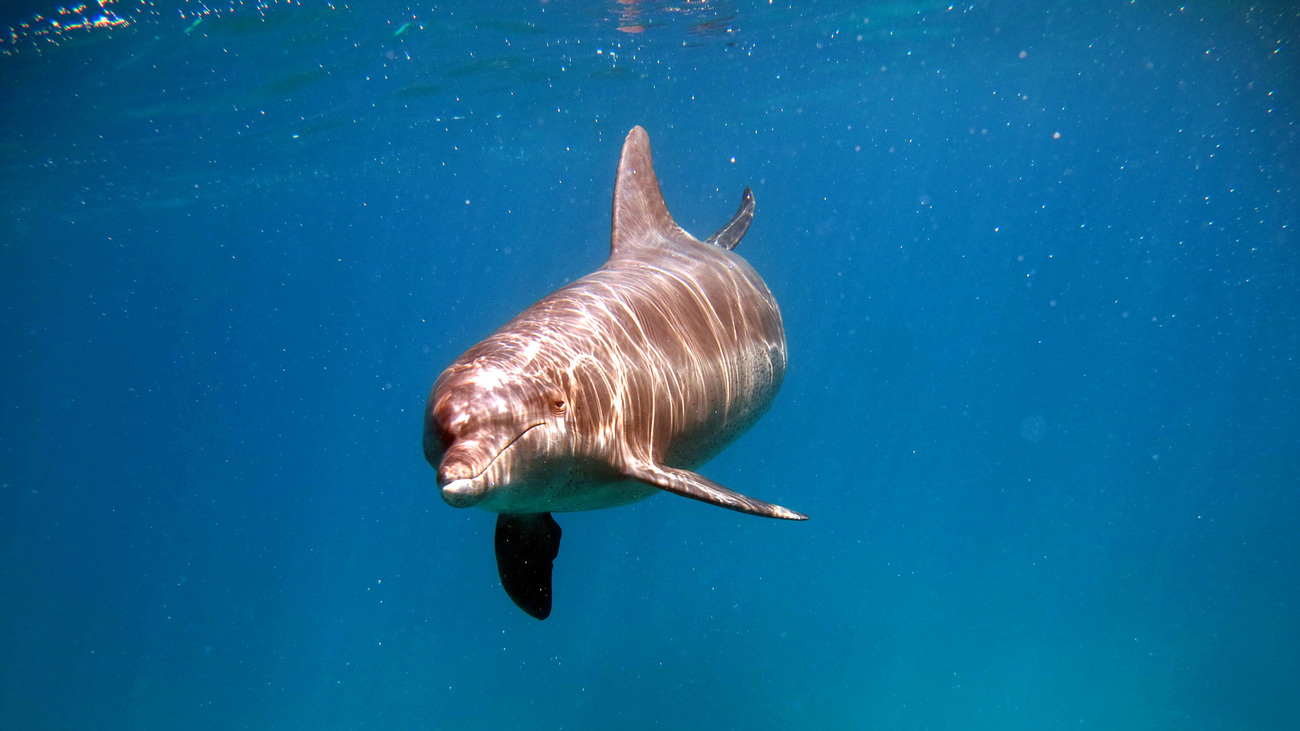
Found off the coast of every continent except Antarctica, the common bottlenose dolphin is known for its fantastic leaps out of the water, its social nature, and its intelligence, but it’s also notably one of the fastest dolphin species. Bottlenose dolphins can swim at speeds up to 35 kilometres per hour (22 miles per hour). For comparison, Olympic swimmer Michael Phelps reportedly can swim at about 8 kilometres per hour (5 miles per hour). Like us, dolphins are mammals, so they do need to come up for air every few minutes while they’re swimming. Typically, dolphins breathe through their blowholes about 4-5 times per minute.
Minke whales are smaller whales that can be difficult to spot. While the common minke whale inhabits the Northern Hemisphere, the Antarctic minke whale’s range extends from the equator to Antarctica. Minke whales can reach speeds up to about 39 kilometres per hour (24 miles per hour).
Commercial whaling is an issue that has long impacted minke whales—and it still does today. Help us end the commercial whale hunt once and for all.
Nicknamed ‘the greyhound of the sea’ for its speed, the fin whale can reach speeds of 40 kilometres per hour (almost 25 miles per hour). The second-largest whale species, fin whales are found in the deeper waters of temperate to polar regions, and their large size doesn’t prevent them from being one of the fastest swimmers on the planet. Interestingly, fin whales are often spotted feeding in large groups comprised of multiple species, including humpbacks, minke whales, and dolphins.
Sadly, fin whales are another commercial whaling victim.
In 2024, Japan decided to once again allow the commercial hunting of fin whales, even though they are listed as vulnerable by the IUCN.
Recognised by its striking black and white colouring which resembles that of a baby killer whale, Dall’s porpoise is a species native to the North Pacific Ocean. Regarded as the fastest swimmers among small cetaceans, they can reach speeds of up to 55 kilometres per hour (34 miles per hour). They also can dive to depths of up to 500 metres (1,640 feet) to hunt fish, squid, and octopus. Due to their social nature, these porpoises are often attracted to fast-moving boats and will bow ride—swimming in front of a moving vessel in the wave it creates.
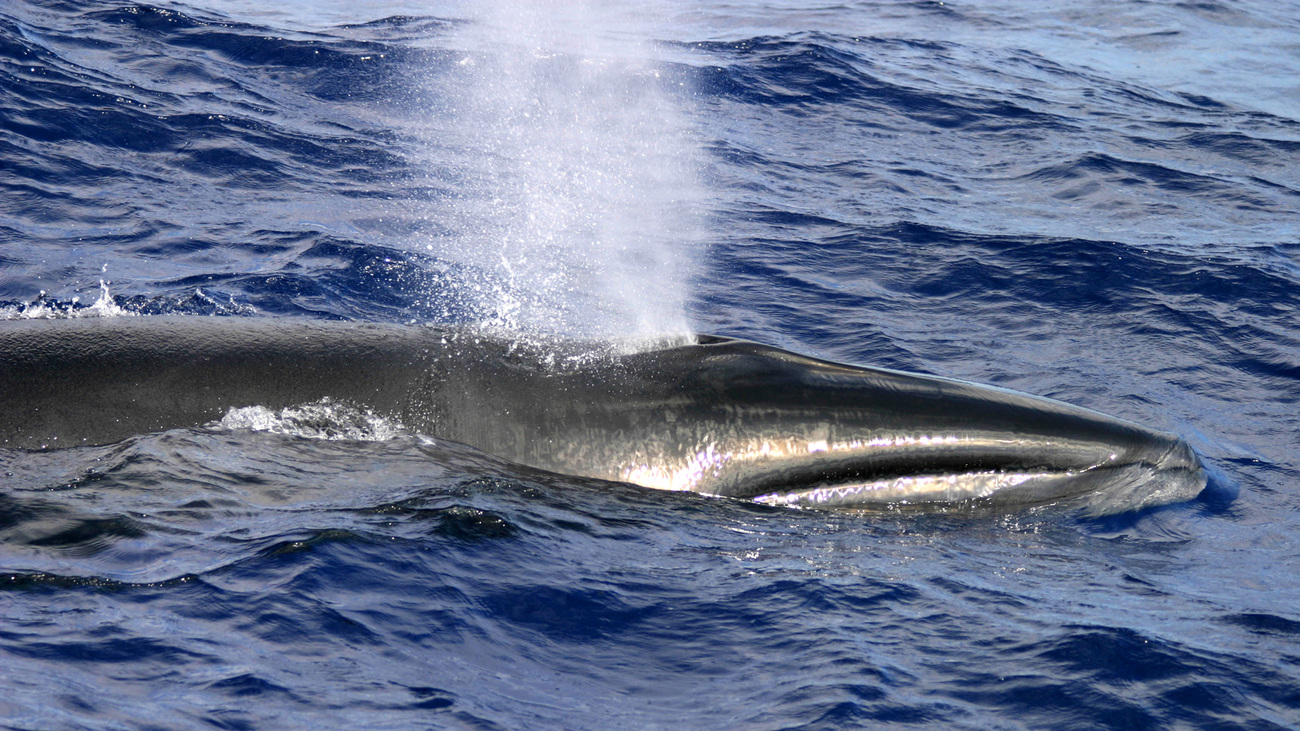
A long, thin, blue-gray whale, the sei whale is one of the fastest whales in the world. They can swim at speeds over 55 kilometres per hour (34 miles per hour), and they can be recognised at the ocean’s surface by their columnar or bushy blow that reaches 3 to 4 metres (10 to 13 feet) high. Sei whales can be found all over the world, in subtropical, temperate, and subpolar climates. Because they were often spotted among pollock in Norway, their name comes from the Norwegian word for pollock (‘seje’).
Sei whales are an endangered species. Historically, their numbers have been depleted severely by whaling, and Japan still allows the hunting of sei whales in the North Pacific.
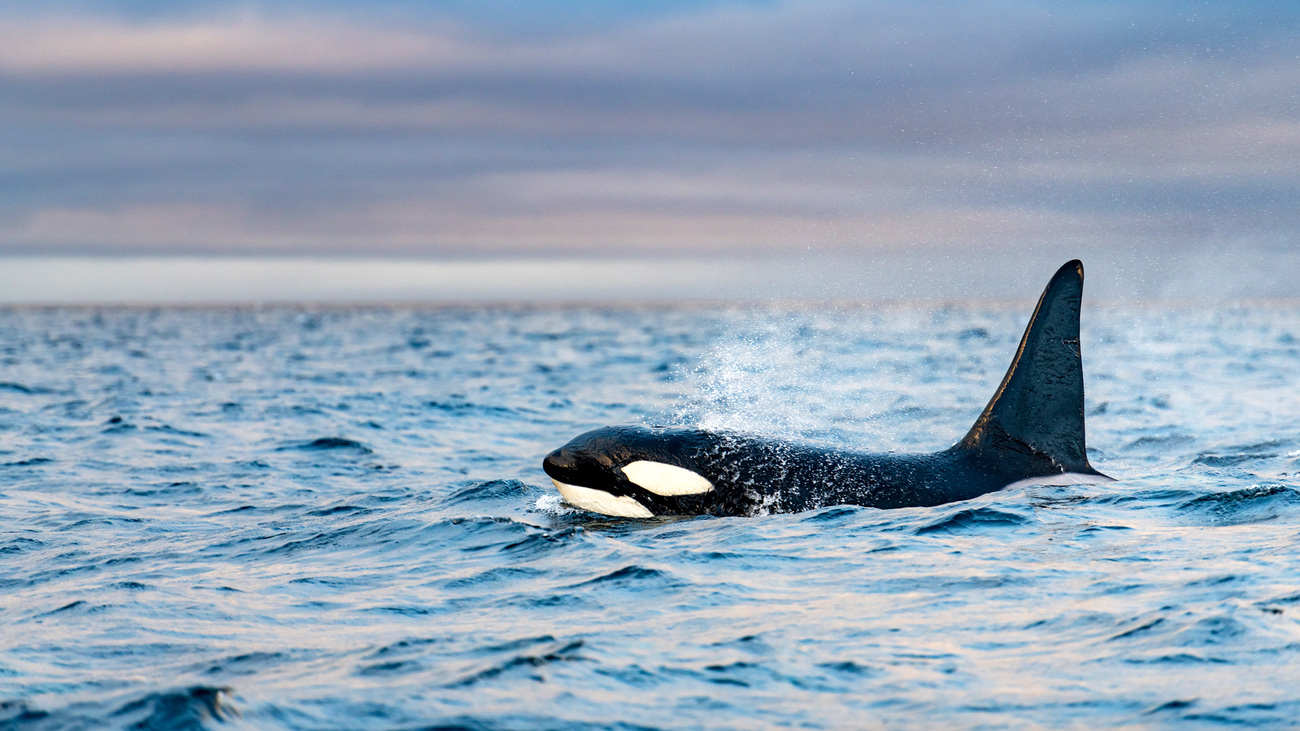
Also known as the killer whale, the orca is actually a member of the dolphin family. Orcas are found in every ocean and off the coast of every continent, though they are most common in colder waters, around places like Antarctica, Norway, and Alaska. Living up to their name, they are apex predators and often hunt other marine mammals. Orcas are also one of the fastest animals in the ocean. The record-holding orca reached over nearly 56 kilometres per hour (almost 35 miles per hour).
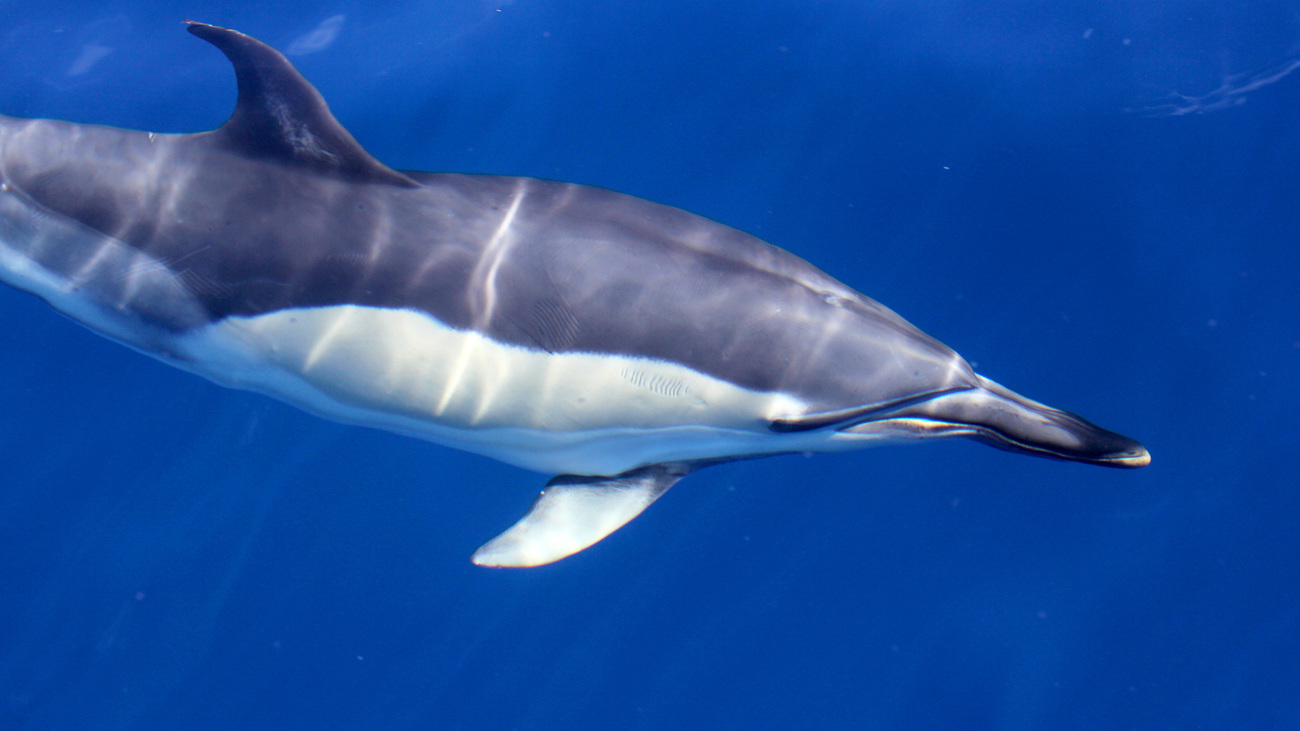
Highly social and full of energy, the short-beaked common dolphin takes the title of the fastest dolphin species, reaching incredible speeds of up to 60 kilometres per hour (37 miles per hour). The short-beaked common dolphin is close to the size of a typical human, at about 182 centimetres (6 feet) long and weighing around 77 kilograms (170 pounds). It’s the most abundant dolphin species on Earth, found primarily in tropical to cool temperate offshore waters.
Want to help protect cetaceans and other marine life? Learn more about how IFAW’s Marine Conservation programme protects animals around the world. You can also check out our Dolphin Rescue Center and Marine Mammal Rescue programme.
Every problem has a solution, every solution needs support.
The problems we face are urgent, complicated, and resistant to change. Real solutions demand creativity, hard work and involvement from people like you.
Unfortunately, the browser you use is outdated and does not allow you to display the site correctly. Please install any of the modern browsers, for example:
Google Chrome Firefox Safari